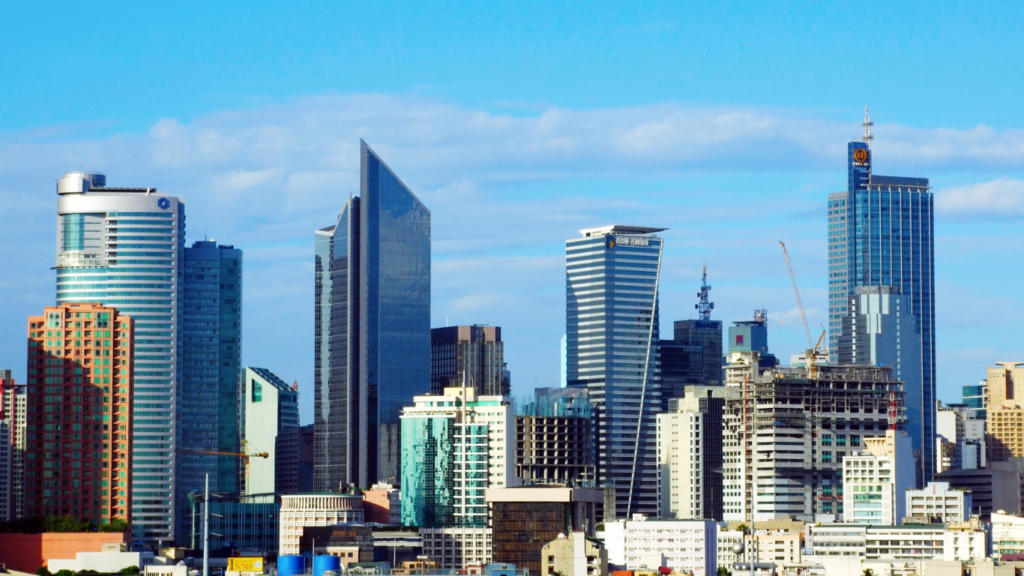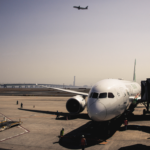Posted on May 02, 2025 | By Ashutosh Singh
India in 2025 is a land of transformation, where ancient traditions meet cutting-edge innovation, and nowhere is this more evident than in its cities. The top 20 developed cities in India are not just urban centers—they are the beating hearts of economic progress, cultural richness, and modern living. From the financial juggernaut of Mumbai to the tech-driven vibrancy of Bengaluru, these cities are shaping India’s future while offering unparalleled opportunities for residents, businesses, and travelers alike. As of May 2025, these urban giants are leading the charge in GDP growth, infrastructure, and quality of life, making them the ultimate destinations for anyone looking to thrive in India.
In this well-researched blog post, we’ll take you on a thrilling journey through India’s most developed cities. We’ll explore their economic contributions, infrastructure advancements, cultural significance, and what makes them stand out in 2025. Whether you’re planning to relocate, invest, or simply learn about India’s urban landscape, this comprehensive guide will reveal why these cities are the torchbearers of progress. Let’s dive into the top 20 developed cities in India and discover the urban marvels that are driving the nation forward!
Introduction: Why India’s Developed Cities Are the Future
India’s urban landscape is evolving at an unprecedented pace, with its cities emerging as global powerhouses of economic growth, innovation, and cultural diversity. In 2025, the top 20 developed cities in India are at the forefront of this transformation, showcasing dynamic development across sectors like technology, finance, manufacturing, and tourism. These cities are not only contributing significantly to India’s GDP but also setting new standards for modern living with their advanced infrastructure, sustainable practices, and high quality of life.
What makes a city “developed”? It’s a combination of factors—economic prosperity, robust infrastructure, access to education and healthcare, cultural vibrancy, and sustainability. Based on recent data, cities like Mumbai, Delhi, and Bengaluru lead the pack with their staggering GDPs—Mumbai at $310 billion, Delhi at $293.6 billion, and Bengaluru at $110 billion—while others like Surat and Visakhapatnam are climbing the ranks with rapid growth. In this blog post, we’ll rank and explore the top 20 developed cities in India, delving into their unique strengths, recent developments, and why they’re the best places to live, work, and invest in 2025. Get ready to be inspired by India’s urban revolution!
Criteria for Ranking the Top 20 Developed Cities in India
To compile this list, we’ve considered multiple factors that define a city’s development in 2025:
Economic Contribution (GDP): A city’s gross domestic product reflects its economic health and ability to drive national growth.
Infrastructure: Modern transportation, metro systems, high-rise buildings, and smart city initiatives.
Quality of Life: Access to healthcare, education, cleanliness, safety, and overall livability.
Cultural and Historical Significance: The city’s role in preserving heritage while embracing modernity.
Sustainability and Innovation: Adoption of technology, smart city projects, and eco-friendly practices.
Recent Developments: Investments, real estate growth, and urban planning initiatives as of 2025.
This ranking draws inspiration from various sources, including real estate trends, urban development reports, and economic analyses, ensuring a well-rounded perspective on India’s most developed cities.
Top 20 Developed Cities in India 2025: The Ultimate List
Here’s our curated list of the top 20 developed cities in India, ordered by their overall development, economic impact, and livability in 2025.
1. Mumbai: The Financial Capital of India
Mumbai, the “City of Dreams,” tops our list with its staggering $310 billion GDP, making it India’s richest city. As the financial capital and home to the Bombay Stock Exchange, Mumbai drives the nation’s economy with its diverse sectors—finance, Bollywood, IT, and manufacturing. The city’s skyline, dotted with high-rise buildings, reflects its advanced infrastructure, while landmarks like the Gateway of India and Marine Drive highlight its cultural significance. Mumbai’s real estate market remains a hotspot, with property prices averaging ₹18,708 per square foot, a moderate increase from a decade ago. Despite challenges like traffic congestion, Mumbai’s high standard of living, cultural diversity, and bustling trade make it a global city.
2. Delhi: The Political and Cultural Hub
Delhi, India’s capital, follows closely with a GDP of $293.6 billion. Known for its historical grandeur, Delhi blends ancient landmarks like the Red Fort with modern dynamism. As the political center, it houses the president, prime minister, and key government institutions. Delhi’s economy thrives on government, business, education, and tourism, with bustling markets like Chandni Chowk adding to its vibrancy. The Delhi Metro, one of the largest metro networks in India, exemplifies its infrastructure, while its population of over 33.8 million (as of 2024) makes it the most populous city in the country. Delhi’s high degree of modernism and economic contributions cement its place among India’s elite cities.
3. Bengaluru: The Silicon Valley of India
Bengaluru, often called the “Silicon Valley of India,” ranks third with a GDP of $110 billion. The city is a global IT hub, hosting leading tech companies and startups. Bengaluru’s infrastructure, including an expanding metro system and world-class educational institutions, supports its growth. Its real estate market is a magnet for investors, with steady price growth in upscale areas. Known for its pleasant weather and green spaces like Cubbon Park, Bengaluru offers a high quality of life, making it a top choice for professionals. In 2025, Bengaluru leads the Savills Growth Hubs Index with a projected GDP growth of over 68% by 2033, driven by its tech sector and educated workforce.
4. Kolkata: The Cultural Capital
Kolkata, with a GDP of $150 billion, is India’s cultural heartbeat. The city’s colonial architecture, vibrant festivals like Durga Puja, and literary heritage make it a cultural capital. Kolkata’s economy is driven by trade, manufacturing, and finance, with its port playing a crucial role in commerce. The city’s infrastructure, including the Kolkata Metro (India’s first metro system), supports its 14.1 million residents. Despite challenges like aging infrastructure, Kolkata’s rich cultural tapestry and historical significance keep it among India’s most developed cities in 2025.
5. Chennai: The Detroit of South Asia
Chennai, the capital of Tamil Nadu, boasts a GDP of $78.6 billion. Known as the “Detroit of South Asia” for its thriving automobile industry, Chennai also excels in IT, healthcare, and film production (Tollywood). The city’s infrastructure, including the Chennai Metro and numerous flyovers, supports its 8.9 million residents. Chennai’s cultural scene, with its classical music, art, and dance, draws artists and tourists alike. In 2025, the housing market in Chennai continues to rise, with residential demand increasing despite higher property taxes, reflecting its economic stability.
6. Hyderabad: The Tech and Pharma Hub
Hyderabad, with a GDP of $75.2 billion, is a technology and pharmaceutical powerhouse. Known for its historical landmarks like Golconda Fort and Charminar, Hyderabad blends tradition with modernity. The city’s IT sector, centered in areas like HITEC City, attracts global companies, while its biotech industry is a leader in India. Hyderabad’s real estate market is booming, with property prices ranging from ₹6,000 to ₹15,000 per square foot. The city’s infrastructure, including the Hyderabad Metro, and its focus on smart city initiatives make it a top destination in 2025.
7. Ahmedabad: The Commercial Capital of Gujarat
Ahmedabad, with a GDP of $68 billion, is a rising star in Western India. Known for its textile industry and diamond markets, the city is a commercial hub. Ahmedabad’s smart city projects, including e-governance and IoT-based traffic management, showcase its technological progress. The Sabarmati Riverfront and Gandhi’s Ashram add cultural depth, while the city’s vibrant Navratri celebrations highlight its traditions. Ahmedabad’s real estate market is growing, driven by its inclusion in India’s Smart Cities Mission, making it a prime investment spot in 2025.
8. Pune: The Educational and IT Hub
Pune, with a GDP of $69 billion, is a city where history meets modernity. Known for its educational institutions and growing IT sector, Pune attracts students and professionals alike. The city’s infrastructure, including the Pune Metro, supports its development, while its green hills and youthful vibe enhance its livability. Pune ranks high for quality of life, making it a top choice for families in 2025. Its automotive industry, with companies like Mahindra and Tata, further boosts its economy.
9. Surat: The Diamond City
Surat, with a GDP of $59.8 billion, is the world’s diamond processing capital, contributing 90% of global diamond exports. The city’s textile industry is equally thriving, making it Gujarat’s economic capital. Surat is expected to have the highest GDP growth rate globally (9.2% annually) between 2019 and 2035, according to Oxford Economics. Its smart city initiatives, including metro corridors and zero unemployment, highlight its progress. Surat’s clean city initiatives and vibrant food scene make it a standout in 2025.
10. Visakhapatnam: The Jewel of the East Coast
Visakhapatnam, with a GDP of $43.5 billion, is a port city on the Bay of Bengal. Known for its beautiful beaches and strategic naval base, Vizag is a hub for trade, education, and IT. The city’s real estate market is growing, driven by its prime location and burgeoning tech sector. Visakhapatnam’s clean city initiatives and smart city projects, like the Intelligent City Operations and Management Centre (ICOMC), enhance its urban management. In 2025, Vizag continues to attract tourists and investors alike.
11. Chandigarh: The Planned City of Cleanliness
Chandigarh, the joint capital of Punjab and Haryana, is a model of urban planning with modern infrastructure and a high standard of living. The city’s IT sector, agriculture, and tourism contribute to its economy, while its cleanliness and sustainability efforts make it one of India’s cleanest cities. Chandigarh’s high-speed data communication facilities and educational institutions add to its appeal in 2025.
12. Bhopal: The City of Lakes
Bhopal, the capital of Madhya Pradesh, is known for its scenic lakes and modern urban planning. With over 1,200 MSMEs and high investments in transport equipment and electrical machinery, Bhopal drives regional economic growth. Its proximity to Mumbai enhances connectivity, while its smart city initiatives improve livability. In 2025, Bhopal is rated as India’s happiest and most livable city, thanks to its beautiful topography and good governance.
13. Indore: The Cleanest City in India
Indore, Madhya Pradesh’s economic hub, is home to 15,000 industries, including automotive giants like Eicher and Mahindra. Consistently ranked as India’s cleanest city in the Swachh Survekshan surveys, Indore’s infrastructure and cleanliness initiatives set it apart. The city’s real estate market is thriving, and its smart city projects enhance urban living in 2025.
14. Nagpur: The Logistical Center
Nagpur, located in Maharashtra, produces 47% of the state’s electricity and is home to Asia’s largest industrial estate in Butibori. The city’s economy thrives on agriculture (oranges) and ayurvedic medicine processing. Nagpur’s strategic location, equidistant from major Indian metropolises, makes it a natural logistics hub. In 2025, the residential real estate market sees 20-25% of bookings from NRIs, reflecting its investment potential.
15. Kochi: The Waterfront Innovator
Kochi, in Kerala, is part of India’s Smart Cities Mission, with a massive waterfront development project set for completion by 2028. The Kochi Metro, targeting a 75 km extension by 2028, and the introduction of 100 e-buses by 2025 highlight its infrastructure growth. Kochi’s IT parks and SEZs drive real estate demand, making it a top city for commercial and residential investments in 2025.
16. Jaipur: The Pink City with Modern Ambitions
Jaipur, the capital of Rajasthan, blends historical charm with modern development. Known for its palaces and vibrant culture, Jaipur is also a growing hub for tourism and education. Its smart city initiatives, including digital services and infrastructure upgrades, enhance its livability. Jaipur’s real estate market is expanding, making it a promising investment destination in 2025.
17. Lucknow: The Multicultural Capital
Lucknow, the capital of Uttar Pradesh, is a multicultural city with a rich history of nawabs and kebabs. As a center of governance, education, and commerce, Lucknow’s economy is thriving. The city’s metro system and smart city projects improve connectivity, while its cultural festivals like Lucknow Mahotsav add to its charm in 2025.
18. Coimbatore: The Manchester of South India
Coimbatore, on the banks of the Noyyal River, is known for its textile industry and natural attractions. The city’s connectivity to destinations like Ooty and Wayanad makes it a weekend getaway hub. Coimbatore’s smart city initiatives and growing IT sector enhance its development, making it a top choice for outdoor enthusiasts in 2025.
19. Gurugram: The Financial and IT Hub
Gurugram, in Haryana, contributes 70% of India’s GDP through its IT, banking, and manufacturing sectors. The city’s skyscrapers and multinational companies reflect its modernity, while its real estate market continues to grow. Gurugram’s high per capita income and smart city projects make it a top developed city in 2025.
20. Rajkot: The Smart City on the Rise
Rajkot, in Gujarat, is part of India’s Smart Cities Mission, focusing on infrastructure, public utilities, and digital services. The city’s industrial sectors, including textiles and food processing, drive its economy. Rajkot’s real estate market is expanding, and its smart city initiatives improve livability, making it a rising star in 2025.
Why These Cities Matter in 2025
Economic Powerhouses
The top 20 developed cities in India collectively contribute a significant portion of the nation’s GDP, with Mumbai, Delhi, and Bengaluru alone accounting for over $700 billion. These cities drive India’s economy through diverse sectors like IT, finance, manufacturing, and trade, positioning India as a global competitor.
Infrastructure and Smart City Initiatives
From metro expansions in Bengaluru and Chennai to IoT-based urban management in Ahmedabad and Visakhapatnam, these cities are embracing smart city technologies. Projects like Kochi’s waterfront development and Surat’s metro corridors highlight their commitment to sustainable growth.
Quality of Life
Cities like Chandigarh, Indore, and Bhopal lead in cleanliness and livability, offering residents access to top-tier healthcare, education, and green spaces. Bengaluru and Pune are favorites for professionals due to their work-life balance and pleasant climates.
Cultural and Historical Significance
Kolkata’s cultural festivals, Ahmedabad’s Sabarmati Ashram, and Jaipur’s palaces showcase India’s rich heritage. These cities balance tradition with modernity, attracting tourists and preserving their historical identities.
Challenges Facing India’s Developed Cities
Overpopulation and Congestion
Cities like Delhi (33.8 million) and Mumbai (20.5 million) face overpopulation, leading to traffic congestion and strain on infrastructure. Smart city initiatives aim to address these issues, but urban planning remains a challenge.
Environmental Concerns
Rapid urbanization has led to pollution and resource depletion in cities like Delhi and Chennai. Sustainable practices, such as Kochi’s waste segregation and Indore’s cleanliness drives, are steps in the right direction.
Economic Disparity
While these cities offer immense opportunities, economic disparity persists. Affordable housing and equitable access to services remain critical areas for improvement in 2025.
Recent Developments in 2025
Smart City Progress: As of July 2024, 90% of India’s Smart Cities Mission projects worth ₹1.44 lakh crore are complete, with the remaining set to finish by March 2025. Cities like Ahmedabad, Kochi, and Bhubaneswar are leading the way.
Real Estate Boom: Hyderabad and Chennai report rising property prices, with increased residential demand despite higher taxes. Nagpur sees 20-25% of housing bookings from NRIs.
Economic Growth: Bengaluru leads the Savills Growth Hubs Index with a projected GDP growth of over 68% by 2033, while Surat is expected to have the world’s highest GDP growth rate (9.2% annually) through 2035.
Practical Tips for Living in or Visiting These Cities
Relocating: Choose cities like Bengaluru or Pune for job opportunities in IT, or Mumbai for finance and entertainment. Consider livability factors—Chandigarh and Indore are ideal for families.
Investing: Surat, Hyderabad, and Ahmedabad offer high returns in real estate, with smart city projects driving growth.
Visiting: Explore Kolkata’s Durga Puja, Jaipur’s palaces, or Visakhapatnam’s beaches. Use metro systems in Delhi, Bengaluru, and Chennai for easy travel.
Sustainability: Support eco-friendly initiatives by using public transport and adhering to waste segregation rules in cities like Kochi and Indore.
Conclusion: India’s Urban Future Shines Bright
The top 20 developed cities in India in 2025 are more than just urban centers—they are the engines of India’s growth, innovation, and cultural richness. From Mumbai’s financial might to Bengaluru’s tech revolution, these cities are redefining what it means to be a global metropolis. They offer a unique blend of opportunities, modern infrastructure, and cultural depth, making them the best places to live, work, and explore in India.
As India continues its journey toward becoming a global powerhouse, these cities will lead the way, setting new benchmarks for development and livability. Whether you’re a professional seeking career growth, an investor eyeing real estate, or a traveler eager to experience India’s diversity, the top 20 developed cities in India have something extraordinary to offer.



